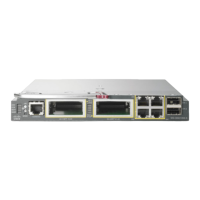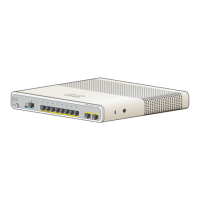clear spanning-tree detected-protocols
To restart the protocol migration process and force renegotiation with neighboring devices on the interface,
use the clear spanning-tree detected-protocols command in privileged EXEC mode.
clear spanning-tree detected-protocols [interface interface-id]
Syntax Description
(Optional) Restarts the protocol migration process on the specified interface.
Valid interfaces include physical ports, VLANs, and port channels.
The VLAN range is 1 to 4094.
The port-channel range is 1 to 128.
interface interface-id
Command Default
None
Command Modes
Privileged EXEC
Command History
ModificationRelease
This command was introduced.Cisco IOS XE 3.3SECisco IOS XE 3.3SE
Usage Guidelines
A device running the rapid per-VLAN spanning-tree plus (rapid-PVST+) protocol or the Multiple Spanning
Tree Protocol (MSTP) supports a built-in protocol migration method that enables it to interoperate with legacy
IEEE 802.1D devices. If a rapid-PVST+ or an MSTP device receives a legacy IEEE 802.1D configuration
bridge protocol data unit (BPDU) with the protocol version set to 0, the device sends only IEEE 802.1D
BPDUs on that port. A multiple spanning-tree (MST) device can also detect that a port is at the boundary of
a region when it receives a legacy BPDU, an MST BPDU (Version 3) associated with a different region, or
a rapid spanning-tree (RST) BPDU (Version 2).
The device does not automatically revert to the rapid-PVST+ or the MSTP mode if it no longer receives IEEE
802.1D BPDUs because it cannot learn whether the legacy switch has been removed from the link unless the
legacy switch is the designated switch. Use the clear spanning-tree detected-protocols command in this
situation.
Examples
This example shows how to restart the protocol migration process on a port:
Device# clear spanning-tree detected-protocols interface gigabitethernet2/0/1
Command Reference, Cisco IOS XE Everest 16.5.1a (Catalyst 3650 Switches)
294
clear spanning-tree detected-protocols

